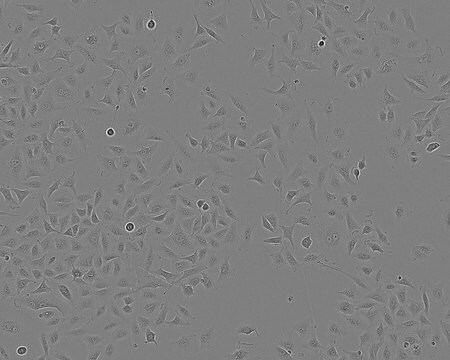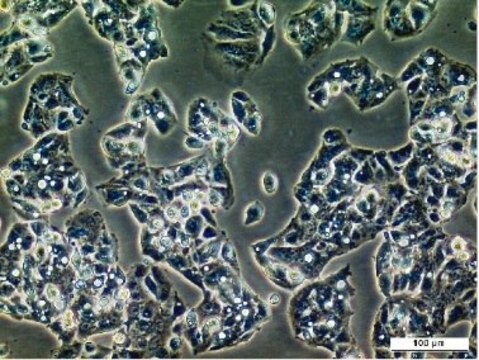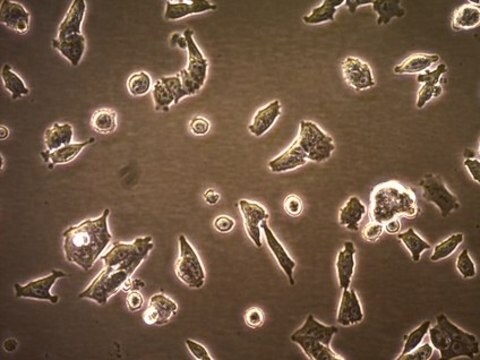LNCap Clone FGC Cell Line human
89110211, human prostate (carcinoma), Epithelial-like
Synonym(s):
LNCaP-FGC Cells
About This Item
Recommended Products
Product Name
LNCap Clone FGC Cell Line human, from human prostate(carcinoma), 89110211
biological source
human prostate (carcinoma)
growth mode
Adherent
karyotype
Pseudodiploid male; seven marker chromosomes, modal number 46, range 33 to 91
morphology
Epithelial-like
products
Prostate acid phosphatase, prostate specific antigen
receptors
Androgen, estrogen
technique(s)
cell culture | mammalian: suitable
relevant disease(s)
metastasis
shipped in
dry ice
storage temp.
−196°C
Cell Line Origin
Cell Line Description
Application
- to study the effect of sex steroid hormones in regulating the expression of oligoadenylate synthetase 1 (OAS1)
- to study the role of curcumin and resveratrol in redox control and ability to promote apoptosis
- to investigate low molecular weight thiols present in the deproteinized extract of the cell line after derivatization
Culture Medium
Subculture Routine
Other Notes
Choose from one of the most recent versions:
Certificates of Analysis (COA)
Sorry, we don't have COAs for this product available online at this time.
If you need assistance, please contact Customer Support.
Already Own This Product?
Find documentation for the products that you have recently purchased in the Document Library.
Our team of scientists has experience in all areas of research including Life Science, Material Science, Chemical Synthesis, Chromatography, Analytical and many others.
Contact Technical Service




